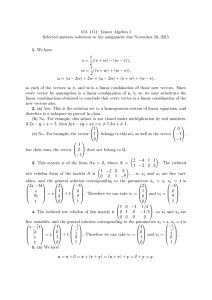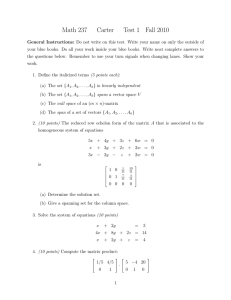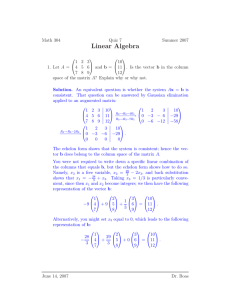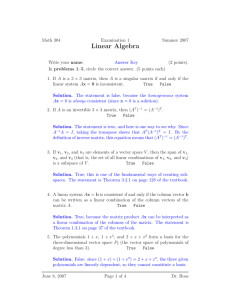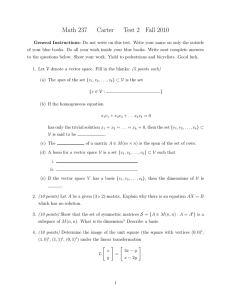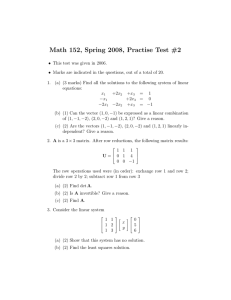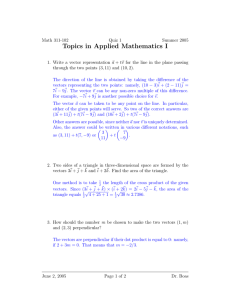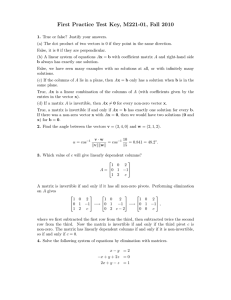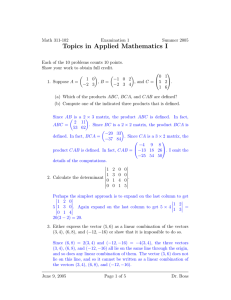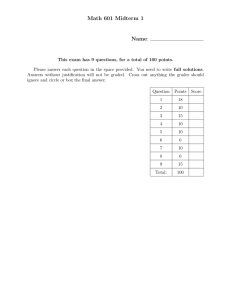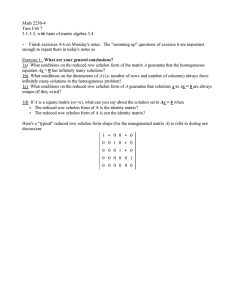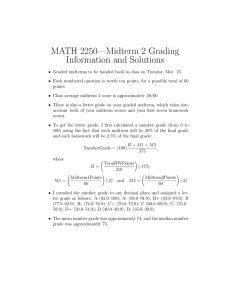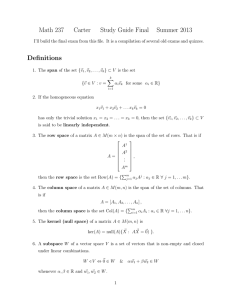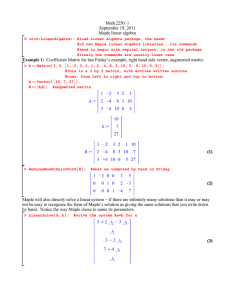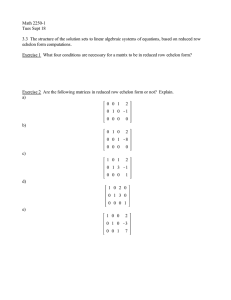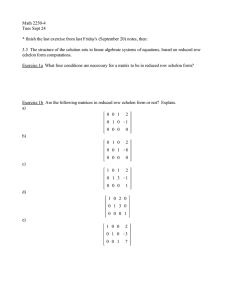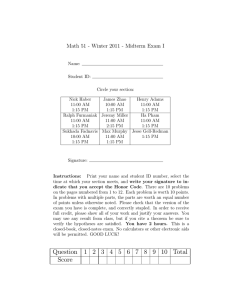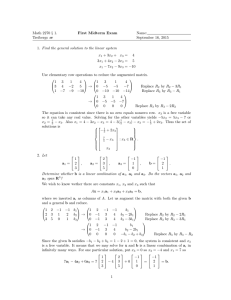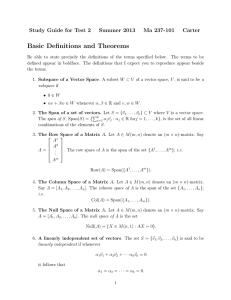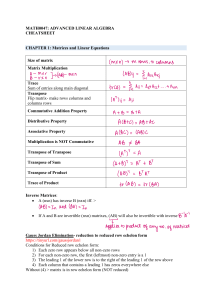Recap from yesterday Math 311-102
advertisement
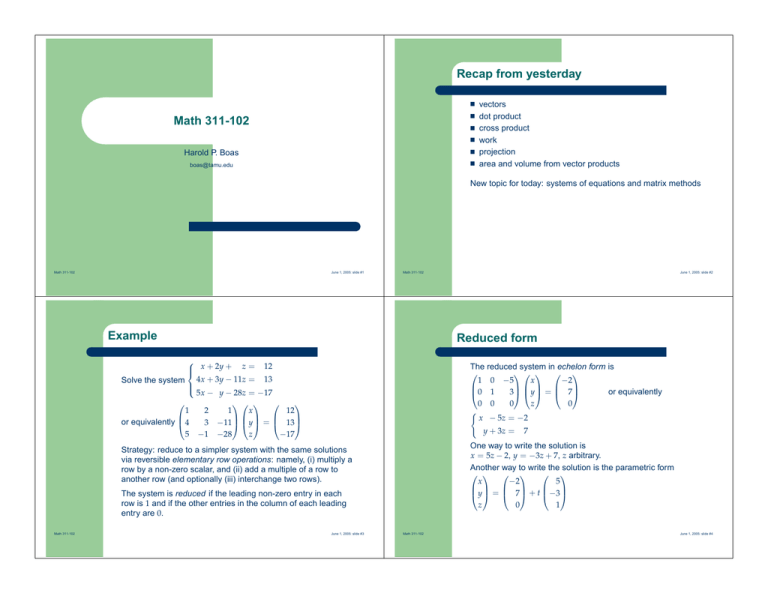
Recap from yesterday ¥ ¥ Math 311-102 ¥ ¥ Harold P. Boas ¥ boas@tamu.edu ¥ vectors dot product cross product work projection area and volume from vector products New topic for today: systems of equations and matrix methods Math 311-102 June 1, 2005: slide #1 Math 311-102 Example Reduced form x + 2y + z = 12 Solve the system 4x + 3y − 11z = 13 5x − y − 28z = −17 1 2 1 12 x or equivalently 4 3 −11 y = 13 5 −1 −28 −17 z The reduced system in echelon form is 1 0 −5 x −2 or equivalently 3 y = 7 0 1 0 0 0 z 0 ( x − 5z = −2 y + 3z = The system is reduced if the leading non-zero entry in each row is 1 and if the other entries in the column of each leading entry are 0. June 1, 2005: slide #3 7 One way to write the solution is x = 5z − 2, y = −3z + 7, z arbitrary. Another way to write the solution is the parametric form 5 −2 x + t = −3 7 y 1 0 z Strategy: reduce to a simpler system with the same solutions via reversible elementary row operations: namely, (i) multiply a row by a non-zero scalar, and (ii) add a multiple of a row to another row (and optionally (iii) interchange two rows). Math 311-102 June 1, 2005: slide #2 Math 311-102 June 1, 2005: slide #4 Interpretation Further interpretation Another way to write the system is 1 2 1 12 x 4 + y 3 + z −11 = 13 5 −1 −28 −17 Geometric interpretation: The set of solutions is a straight line passing through the point (−2, 7, 0) in the direction (5, −3, 1). Algebraic interpretation: Any multiple of the vector (5, −3, 1) is a homogeneous system solution of the corresponding 0 x 1 2 1 3 −11 y = 0 4 0 z 5 −1 −28 In other words, the problem amounts to writing the vector on the right-hand side as a linear combination of the column vectors in the original matrix. The existence of infinitely many solutions indicates that the columns of the matrix are linearly dependent: in fact, 0 1 2 1 5 4 − 3 3 + 1 −11 = 0 0 −28 −1 5 Vector (−2, 7, 0) particular of the original system solution isa 12 x 1 2 1 3 −11 y = 13 4 −17 z 5 −1 −28 The general solution of the inhomogeneous system is the sum of the general solution of the homogeneous system and any particular solution of the inhomogeneous system. Math 311-102 June 1, 2005: slide #5 You can read off the number of linearly independent column vectors by looking at the reduced echelon form of the matrix. Math 311-102 June 1, 2005: slide #6

